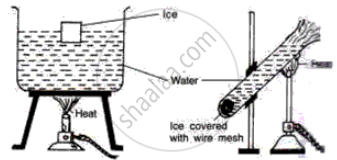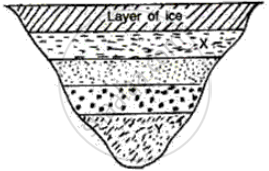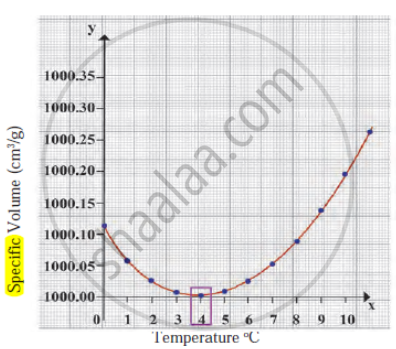Advertisements
Advertisements
प्रश्न
Explain the following
Fishes survive in ponds even when the atmospheric temperature is well below 0°C.
उत्तर
The anomalous expansion of water helps preserve aquatic life during very cold weather. When temperature falls, the top layer of water in a pond contracts becomes denser and sinks to the bottom. A circulation is thus set up until water in the pond reaches its maximum density at 4°C. If the temperature falls further, then the top layer expands and remains on the top till it freezes. Thus, even though the upper layer are frozen, the water near the bottom is at 4°C and the fishes can survive in it easily.
APPEARS IN
संबंधित प्रश्न
Calculate the time required to heat 20 kg of water from 10°C to 35°C using an immersion heater rated 1000 W. Assume that 80% of the power input is used to heat the water. Specific heat capacity of water = 42000 J kg−1 K−1.
Explain, why does a glass bottle completely filled with water and tightly capped burst when placed in a freezer?
Explain why do vegetables and fruits get damaged during severe frost?
Why does a thick glass tumbler crack when very hot water is poured in it?
Study the following diagrams and write down your observations.

What will be the approximate temperature of water in the lake shown in the following diagram?

(i) At X, and
(ii) At Y?
In a region with a cold climate the aquatic animals can survive at 4 °C, because _______.
In cold regions, in winter the pipes for water supply break.
Observe the following diagram and write the answers to the questions given below.

- Which process does the graph represent?
- What is the range of temperature responsible for the behaviour?
